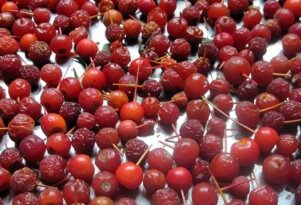Seed to Harvest
Cold loving vegetables like snow peas, radishes, spinach and kale have quick turnouts, usually about 50 days, which makes them great for succession crops and crop rotation.
You can plant those in early April, and by mid-May they’re already harvest ready and relinquish their spot to the summer vegetables. When the weather cools in September, you can plant them again.
Peas and beans sprout in seven to ten days and take another month to yield fruit. Don’t ignore the direction to soak them overnight before planting: it really makes a difference. I hope you like green beans, because they are going to bless you with lots of fruit. Seed to harvest time 55-65 days.
The ever so popular tomatoes and peppers take between 60 and 80 days to yield, with the peppers on the long end of that interval.
It is important to fit that interval squarely between equinoxes, because after September 21 the fruit won’t ripen, no matter how warm it is outside.
Cucumbers and squashes need between 50 and 80 days. They sprout in only a few days and grow very fast. In three weeks they’re already in bloom, but curb your enthusiasm. They bear both male and female flowers on the same plant, and the male ones bloom first, almost a month before the fruitful female blossoms. Be patient, the latter will appear, eventually. This family needs a lot of water, especially the cucumbers, which grow bitter and stunted in drought conditions.
Last, the slow pokes, the eggplants, need 100 days to bear fruit, given ideal conditions. In colder climates, direct-sowing them in the garden is a wasted effort. Start them indoors or buy seedlings.




 Previous Post
Previous Post Next Post
Next Post




